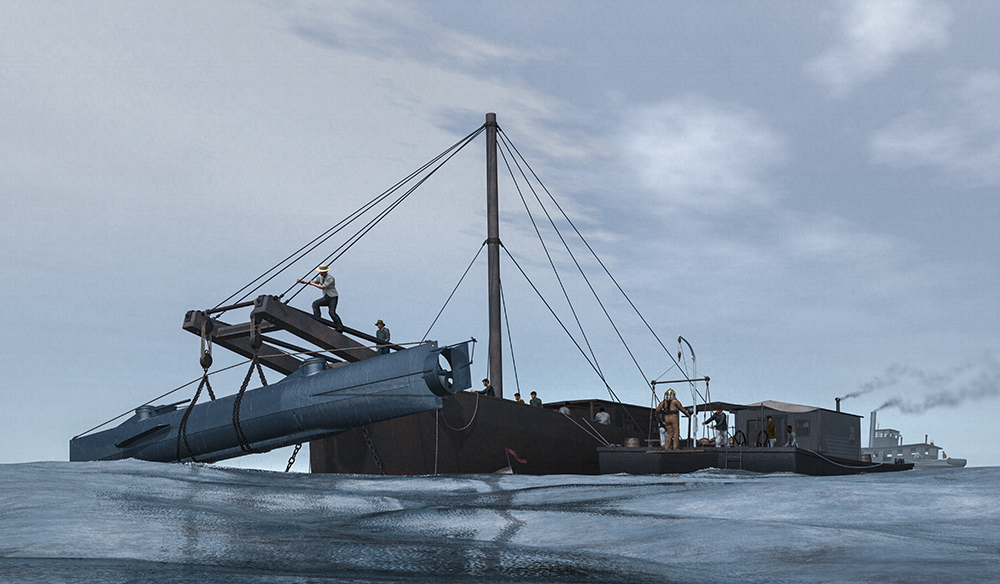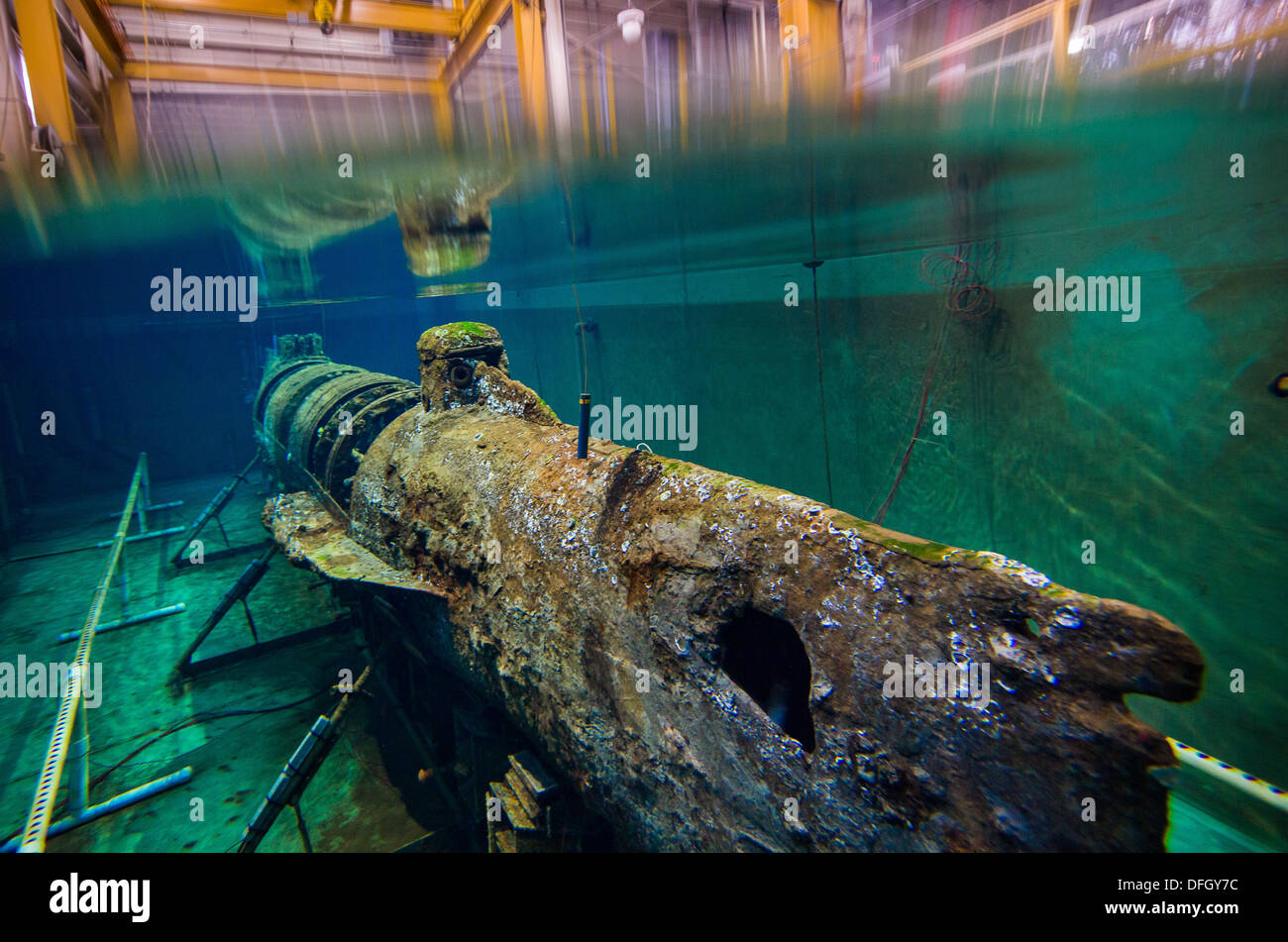


And that's the full tour of the Hunley's navigation system. The young captain George Dixon would have been able to look out of a small view port. It welcomes visitors Saturday from 10 a.m. Only a single candle would have lit the captain's depth gauge and compass. The facility is not open to the public on weekdays, as thats when scientists examine the vessel. The Hunley wasn't a great place to be - sweaty, stagnant and, no doubt, dark. The International Space Station, much like modern-day nuclear submarines, gets its oxygen by running an electrical current through water to split the hydrogen from the oxygen. Still, there's only so long a rebreather will last. It was the first combat submarine to sink an enemy warship, although the Hunley was not completely submerged and was lost at some point following. The Hunley demonstrated both the advantages and the dangers of undersea warfare.
H.l hunley submarine portable#
Rebreathers have been used in certain types of underwater dives and even in space, when NASA equipped Apollo astronauts with portable life support systems that scrubbed out carbon dioxide. Hunley was a submarine of the Confederate States of America that played a small part in the American Civil War, but a large role in the history of naval warfare. After the ship was raised, it was carried by barge up the Cooper River to the specially designed Warren Lasch Conservation Center in North Charleston.Even during the Hunley's short life, the enemy to the north was exploring chemical scrubbing systems to strip the carbon dioxide out of the air, says Robert Neyland, Hunley Project director and chief archaeologist. RAISING HISTORY The recovery of the Hunley is generally considered to be the most important underwater archaeological expedition of the century. Hunley would jam the copper cylinder into the side of the Housatonic and then back away. D.” This appears to be the coin described in Dixon family lore: George’s sweetheart gave it to him as a lucky charm, and tucked in his pocket, it diverted a bullet at the Battle of Shiloh, saving his leg (and maybe his life) Hunley was armed with a torpedo, a copper cylinder filled with gunpowder attached by a copper wire to a 22-foot-long wooden pole mounted on the front of the submarine. LUCKY GOLD Near the remains of Hunley commander Lieutenant George Dixon, archaeologists found a $20 gold piece with the inscription “Shiloh ApMy life Preserver G. On April 17, 2004, the remains of the third crew joined them, laid to rest with full military honors. Two crews of men (including one of its inventors, Horace Hunley) perished in earlier Hunley dives, and they were buried together at Charleston’s Magnolia Cemetery.
H.l hunley submarine series#
The tales of HL Hunley were described by the two most famous best-selling authors, namely Clive Cussler and Tom Chaffin, and has also been told in a tv series called Hunley: First Kill. Each end of the craft was equipped with water ballast tanks that could be flooded via valves (to lower the sub) or pumped dry by hand (to raise it).īEFORE ITS TIME The submarine was, at the time, an invention stretching the boundaries of innovation, and the Hunley’s crew members have been called the astronaut test pilots of their time. Hunley was the first combat submarine that sank an enemy ship, making it an important submarine in history. Hunley did not return from this mission, and was. She carried a crew of eight-seven to turn the hand-cranked propeller and one to steer the boat. The Federal ship sank rapidly, becoming the first warship to be lost to a submarines attack. One theory is that the crew was knocked unconscious-an idea supported by the fact that their remains were found at their stations.ĬRAMPED QUARTERS The Hunley was only 39 feet long, 4.5 feet high, and 3.5 feet across. That means the sub was less than 20 feet from the Housatonic when the torpedo exploded. Hunley departed Breach Inlet near Charleston and sank the Union blockader the USS. Lance says the designers of the powderkeg weapon also may have recognized the dangers of being too close to a blast in water. Hunley, a privateer who had the submarine built from an old ship’s boiler in Alabama in 1863. Scientific findings indicate that the spar was actually iron and more of a ”contact mine” only 17 feet long. The Hunley earned its place in history the day it became the first submarine in the world to sink an enemy ship in battle. On the night of February 17, 1863, the Confederate submarine H.L. During development and testing, the Hunley had sunk twice, drowning 13 crewmen including its namesake, Horace L. The Hunley was to ram the spar into the enemy ship, then back off and detonate the torpedo. FORWARD CHARGE The sub’s original design called for a spar torpedo attached to a 22-foot wooden spar mounted to the bow.


 0 kommentar(er)
0 kommentar(er)
